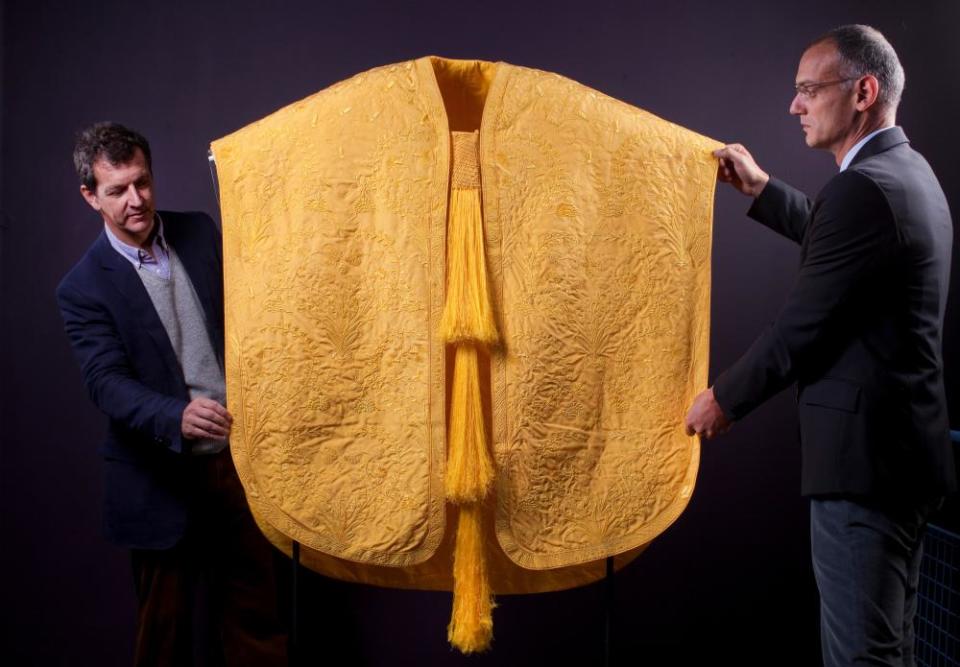‘Stronger than steel, stretchier than rubber’: the quest to harness the power of spider silk

I remember doing a presentation on spider silk for my year nine science class. Like all good high school assignments, it involved a last-minute flurry of writing things half-remembered from a newspaper article that I had already lost.
I made a speech about how spider silk was supposedly this incredible material, stronger than steel and stretchier than rubber. And that scientists were coming up with crazy ways to make spider silk bulletproof vests and genetically engineering spider-goats to mass produce super-strong silk. I didn’t understand most of what I was saying and wasn’t sure I believed most of it. I figured it must have been the result of a late-night fever dream before a deadline.
Related: How to be more productive? I am taking lessons from my eight-legged life coach | Emma Beddington
After almost failing high school science, I would eventually go on to become a scientist. And now, looking back, I realise that it wasn’t a fever dream, it was all true. Even the bit about spider-goats.
Around that same time, unbeknownst to me, the world of spider-science was undergoing huge technological advances. In 1990, scientists sequenced the first spider silk gene – a code that gave us instructions to build the proteins that make spider silk. By 1997, scientists had inserted these genes into E. coli cells and were brewing artificial silk in the laboratory. As we entered the new millennium, things took a weird turn and in 2002 scientists announced that they had grown spider silk inside mammalian breast cells.


Spider silk properties are as miraculous as they sound. The dragline silk of orb web spiders can absorb more energy than bulletproof Kevlar and can bounce back into shape without losing its elasticity. There is no stronger material made by any other living thing, and nothing made by humans comes close. We have been trying to harness the potential of spider silk for centuries and this flurry of research around the turn of the century is just one part of a longer tale.
In the early 1700s, the president of the Royal Society of Sciences in France experimented with hand-spinning silk threads from spider egg sacs. In the late 1800s, the French Jesuit missionary Jacob Paul Camboué travelled to Madagascar and developed a method of harvesting silk from golden silk orb-weaver spiders en masse. Using local skills and labour, Camboué established a production line where silk was spun into threads and woven into fabric using modified looms and weaving tables.
In the early 2000s entrepreneurs Nicholas Godley and Simon Peers resurrected the methods of Camboué and produced two pieces of shimmering gold clothing made from spider silk. They are the only pieces of spider silk textiles in existence and are, essentially, priceless. Two centuries on from the work of Camboué, spider silk weaving is still immensely cost prohibitive.
Spiders don’t make good domestic animals. They are small animals that make very small amounts of silk. Even spiders harmless to humans can be territorial and cannibalistic, so keeping them in captivity isn’t as simple as putting them out to pasture.
As a result, scientists shifted focus from using natural spider silk, to culturing lab-grown artificial silk. For some this meant brewing genetically engineered E. coli bacteria in industrial-scale vats. Others took a more ambitious approach and, in 1999, the world was introduced to Sugar and Spice, the first pair of genetically engineered spider-goats. They looked like any other goat, but the milk they produced was rich in spider silk proteins.
The silk proteins that come from genetically engineered goats and bacteria are dissolved in fluid and must be mechanically and chemically processed to form fibres. This complicated process, plus the labour and costs involved in running a commercial dairy farm, inevitably meant that spider-goat silk never made it to market. But this was just a small side-step on the unwavering mission to harness the potential of silk.
Currently, a handful of biotechnology companies focus on using genetically engineered E. coli and silkworms. Unfortunately, this still hasn’t resulted in affordable silk textiles. In 2019, biotech company Spiber collaborated with The North Face to release the first “commercially available” spider silk clothes. They produced 50 jackets that were only available to the lucky few who won a lottery that gave them the privilege of purchasing a US$1,400 jacket.
Sadly, spider silk bulletproof jackets never came to fruition. Silk strength is tied to its elasticity so, while artificial silk plates can stop a bullet, that bullet would be halfway through your torso by the time it stopped. Sights are now turning to more delicate applications of artificial spider silk – as strong and flexible scaffolding for skin grafts, hypoallergenic coatings for surgical implants, and organic coatings for perishable foods.
Now, almost a quarter of a century on from my science class presentation, spider-goats no longer exist, and I can’t afford a spider silk ski-jacket. Instead, we are fever-dreaming about a future where spider silk may revolutionise medicine. We’re a way off it being a reality, but early trials are promising, and companies are investing heavily in making bioengineered medical spider silk a reality.
While some may squirm at the spider’s web crossing their garden path, others source endless inspiration from those same silk threads. Despite some creative and ambitious attempts, a fully realised application for spider silk still lies beyond our grasp, but tantalisingly close.
Silk & Venom: The incredible lives of spiders by James O’Hanlon is out now through UNSW Press


